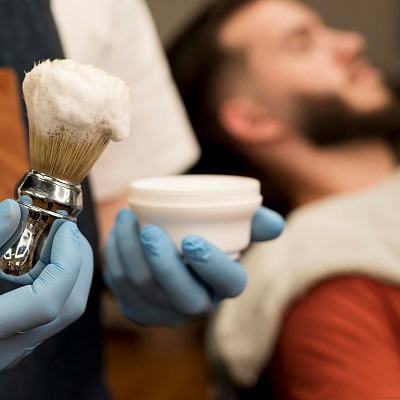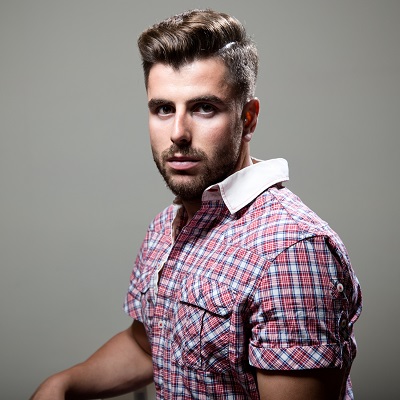
Hair restoration is a changing field in aesthetic treatment, combating hair loss and regaining naturally looking hair. In some cases, hair loss may change a person’s self-esteem and outlook, whether it is due to genetics, hormonal changes, stress, or medical conditions. In Islamabad, modern hair recovery strategies are helping heaps regain not only their hair but their confidence, too.
Understanding Hair Restoration: More Than Just Transplants:
Hair healing isn’t restricted to standard hair transplant surgeries. A comprehensive range of novel therapies is available, from PRP (Platelet-Rich Plasma) therapy, stem cell therapy, and low-level laser treatment (LLLT) to an advanced suite of FUE and FUT techniques. These solutions are non-surgical and surgical procedures modified per the needs and style of hair loss, allowing natural hair regrowth with minimal downtime.
Top Causes of Hair Loss in Men and Women:
Hair loss doesn’t discriminate. Here are some of the most common reasons in both genders:
- Genetic predisposition (Androgenetic Alopecia)
- Stress and way of life factors
- Hormonal modifications (pregnancy, menopause, thyroid problems)
- Nutritional deficiencies
- Medical treatments (chemotherapy, medications)
- Scalp infections or conditions
Understanding the underlying cause of your hair loss is the first step to selecting the proper recovery treatment.
Modern Techniques for Hair Restoration in Islamabad:
Hair restoration in Islamabad has advanced rapidly, providing international services with unique technology and professional professionals. Here are the modern techniques making waves:
- FUE (Follicular Unit Extraction)
This minimally invasive surgical approach involves extracting male or female hair follicles from the donor location and implanting them in balding areas. Benefits encompass:
- Minimal scarring
- Natural-looking outcomes
- Quick healing time
PRP Therapy
PRP includes drawing a small quantity of your blood, processing it to extract increased-rich platelets, and injecting them into the scalp. It’s fairly effective for early-level hair loss.
- Non-surgical and secure
- Stimulates hair follicles
- Enhances hair thickness
Stem Cell Therapy
A modern-day treatment using stem cells to regenerate hair boom. It’s gaining a reputation because of its regenerative capacity and coffee hazard.
- Promotes new follicle growth
- Improves scalp fitness
FUT (Follicular Unit Transplantation)
In this method, a strip of scalp is removed and divided into grafts. Though barely more invasive than FUE, it’s ideal for sufferers needing massive insurance.
- High graft yield
- Suitable for larger bald areas
Laser Hair Therapy
Low-stage lasers are used to stimulate dormant hair follicles, which is ideal for patients who prefer non-invasive options.
- Painless periods
- No downtime
Key Benefits of Hair Restoration
- Restores natural hairline and density
- Improves self-belief and usual appearance
- Long-term strategy for hair thinning
- Personalized remedy plans
- Suitable for ladies and men of all ages
Who Is the Right Candidate?
The best candidate for hair recovery:
- Has practical expectations
- Is in exact average health
- Suffers from sample baldness or thinning hair
- Has a stable donor area (for surgical techniques)
Your adventure begins with a session, where your scalp and hair health will be assessed thoroughly.
Why Islamabad is a Hub for Hair Restoration:
Islamabad has rapidly become a cross-to destination for hair restoration thanks to:
- Internationally trained professionals
- Use of superior technology
- Affordable treatment alternatives
- Highly affected person’s pride charges
How to Choose the Right Hair Restoration Clinic:
When choosing the right surgeon, keep in mind:
- Surgeon’s experience and credentials
- Availability of cutting-edge gadgets
- Transparent pricing and evaluations
- Personalized session process
Dr. Naveed Azhar, a recognized name in the field, is known for providing customized hair restoration plans that combine expertise with care.
Cost of Hair Restoration in Islamabad:
The price of hair recovery varies widely depending on the procedure and the process ranges from PKR 95,000 to PKR 160,000 and depends upon the further factors:
Factors That Affect the Cost:
- Technique used (FUE, FUT, PRP, etc.)
- Number of grafts required
- Doctor’s expertise
- Clinic location and recognition
- Pre- and post-care required
Is Consultation Required?
Absolutely. A consultation is highly recommended for a hair restoration adventure. It helps determine the cause of hair loss, verify scalp health, and devise a tailored treatment plan. Our Royal Hair transplant clinic in Islamabad offers digital scalp analysis and pre-treatment planning as part of the consultation.








 Hair transplants provide a permanent solution to restore a full head of hair. Many who follow this technique, however, are unsure about many things after the treatment. Hence, the main question they ask
Hair transplants provide a permanent solution to restore a full head of hair. Many who follow this technique, however, are unsure about many things after the treatment. Hence, the main question they ask 
 Beard hair transplant in Islamabad has become one of the most effective solutions for the men using hair techniques to fulfill the well-groomed, shapely beard. Implant is a delicate procedure by which hair grafts are harvested from a donor site or more often the scalp and placed in the whiskers area and many people don’t have much idea about the thing that
Beard hair transplant in Islamabad has become one of the most effective solutions for the men using hair techniques to fulfill the well-groomed, shapely beard. Implant is a delicate procedure by which hair grafts are harvested from a donor site or more often the scalp and placed in the whiskers area and many people don’t have much idea about the thing that 
 Have you ever been concerned about how a motorcycle helmet might affect your most recent hair transplant? It’s reasonable to be worried about what protective cap use could mean for your recuperation and results. The most dire outcome imaginable could include confusion or mishaps that could influence your recently relocated hair. Thankfully, there is hope and a way to get through this.
Have you ever been concerned about how a motorcycle helmet might affect your most recent hair transplant? It’s reasonable to be worried about what protective cap use could mean for your recuperation and results. The most dire outcome imaginable could include confusion or mishaps that could influence your recently relocated hair. Thankfully, there is hope and a way to get through this. 
 PRP is the most advanced procedure in bald headedness treatment that was initiated by
PRP is the most advanced procedure in bald headedness treatment that was initiated by 
 Hair transplants are becoming increasingly frequent because they provide a lifetime natural-looking result. Particularly in the days after the operation, the effectiveness of a hair transplant relies on the condition of the grafts. Many times, patients concerned about accidentally touching their hair transplants after surgery. Hence, read “
Hair transplants are becoming increasingly frequent because they provide a lifetime natural-looking result. Particularly in the days after the operation, the effectiveness of a hair transplant relies on the condition of the grafts. Many times, patients concerned about accidentally touching their hair transplants after surgery. Hence, read “
 Hair relocation in
Hair relocation in
 Many individuals have an issue with hair loss, which may be disturbing. One approach to address this is via hair regeneration. Still,
Many individuals have an issue with hair loss, which may be disturbing. One approach to address this is via hair regeneration. Still,